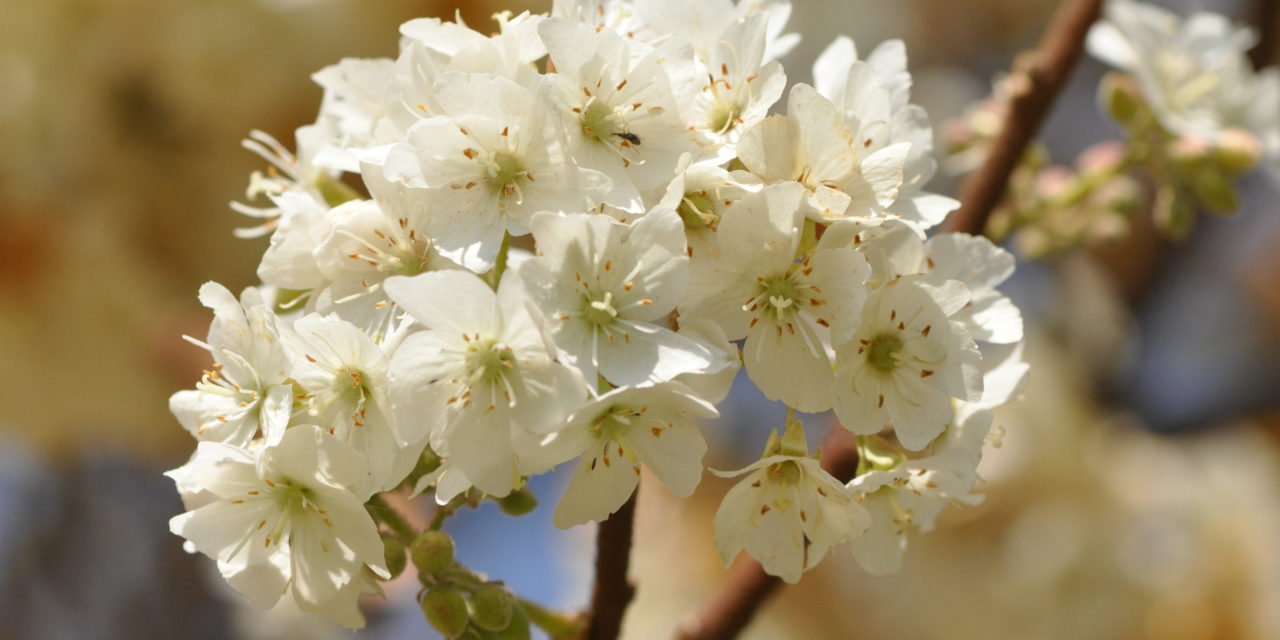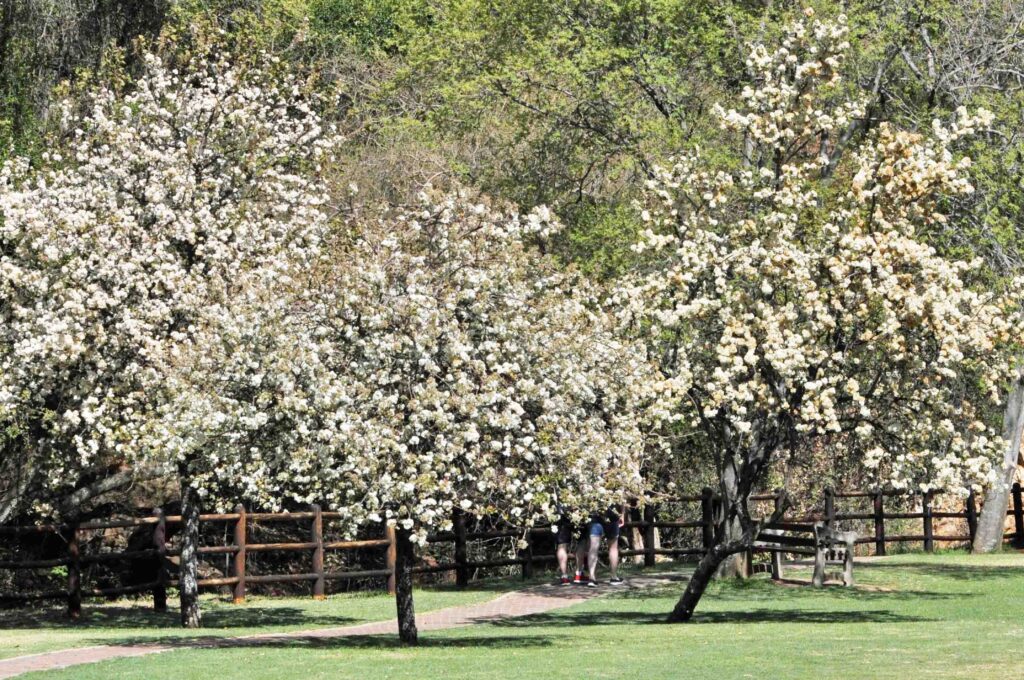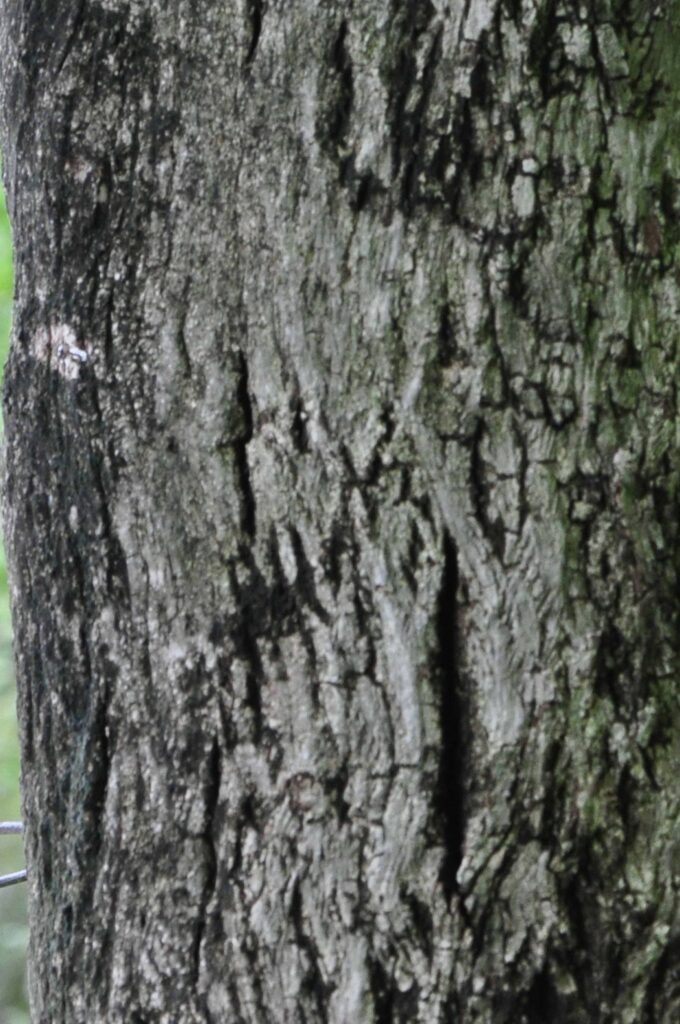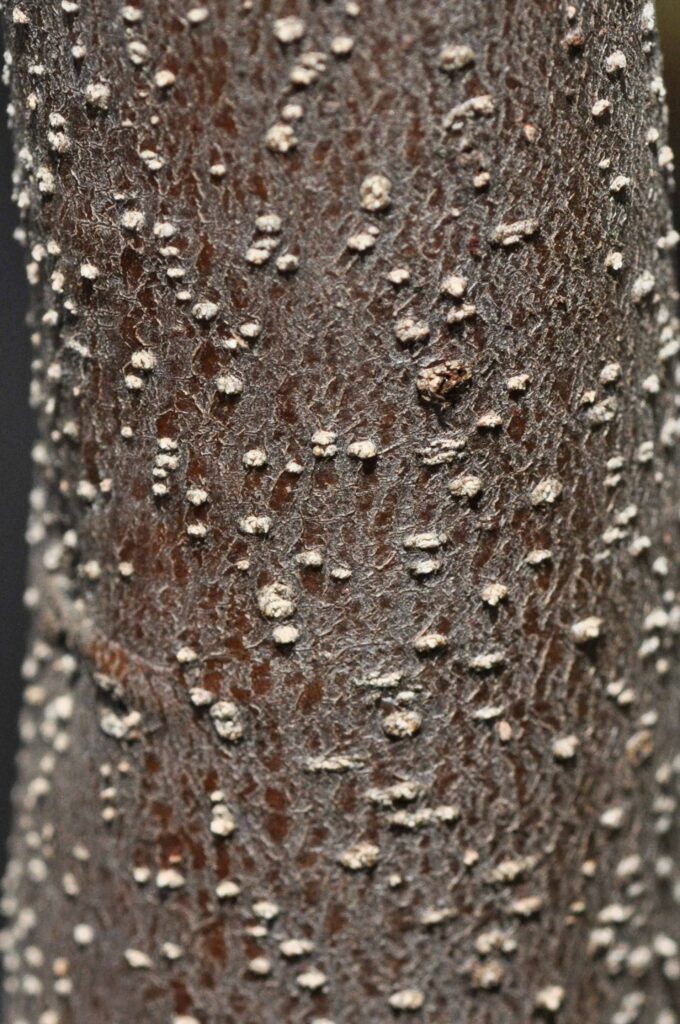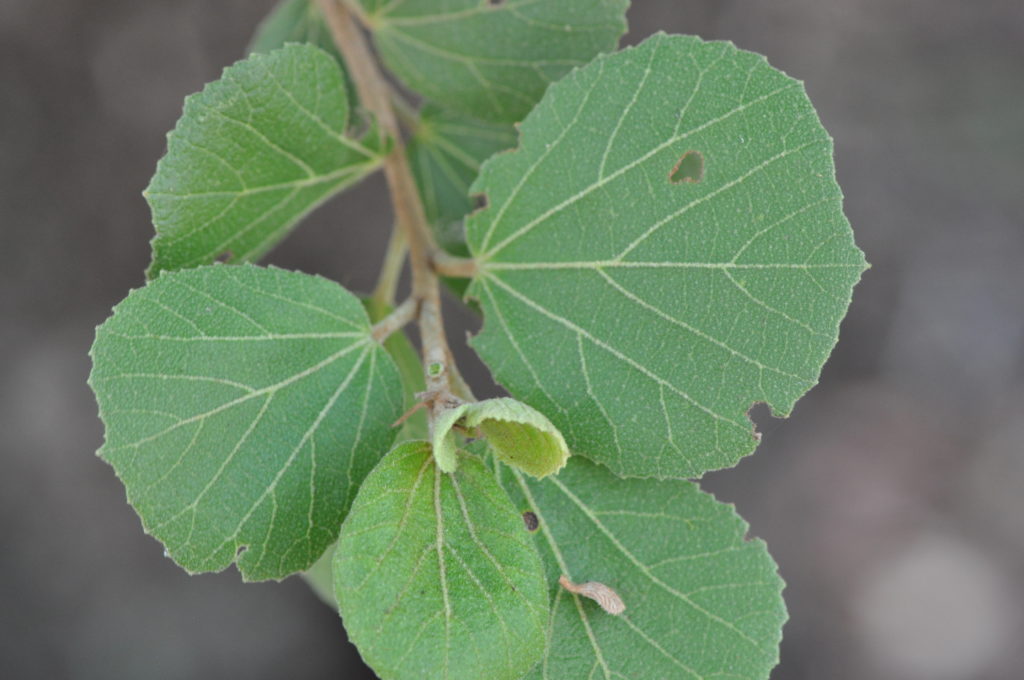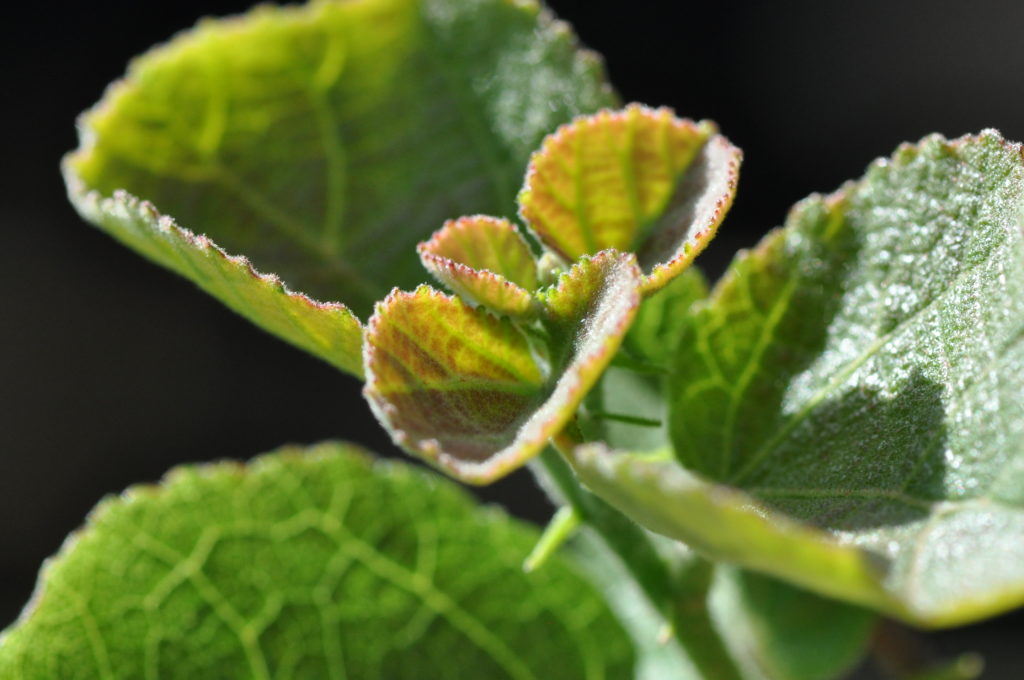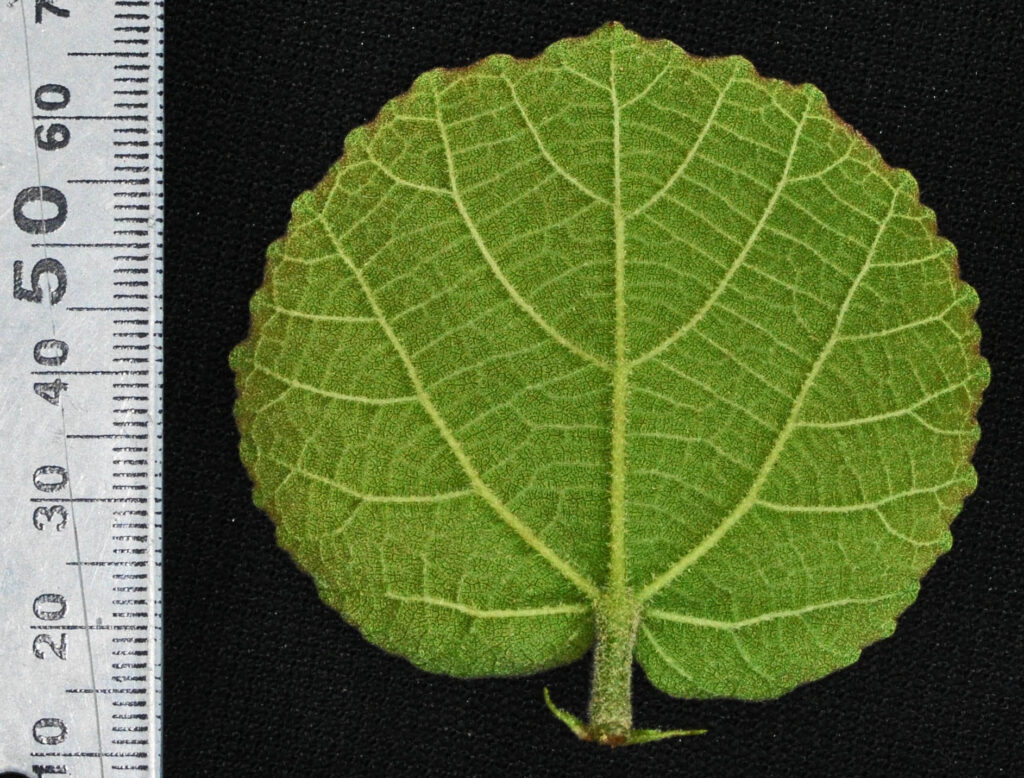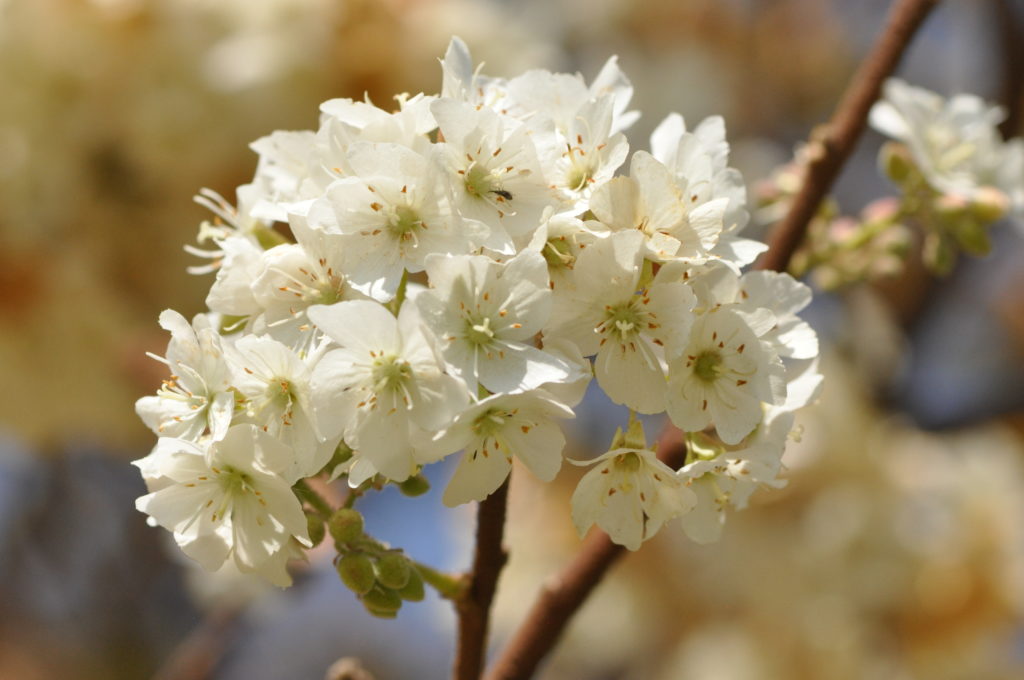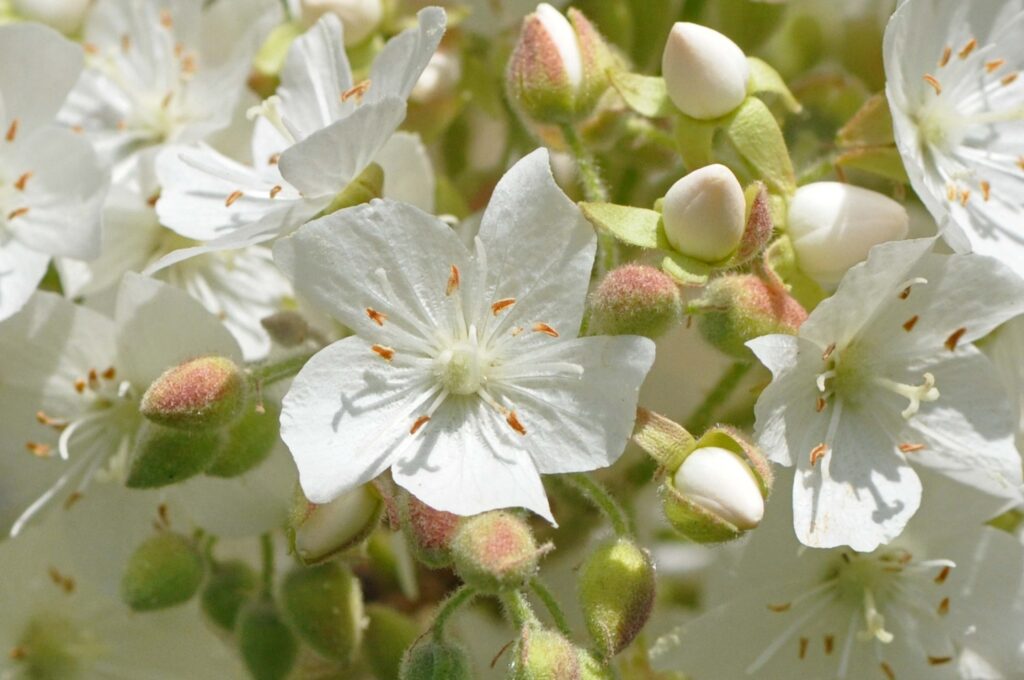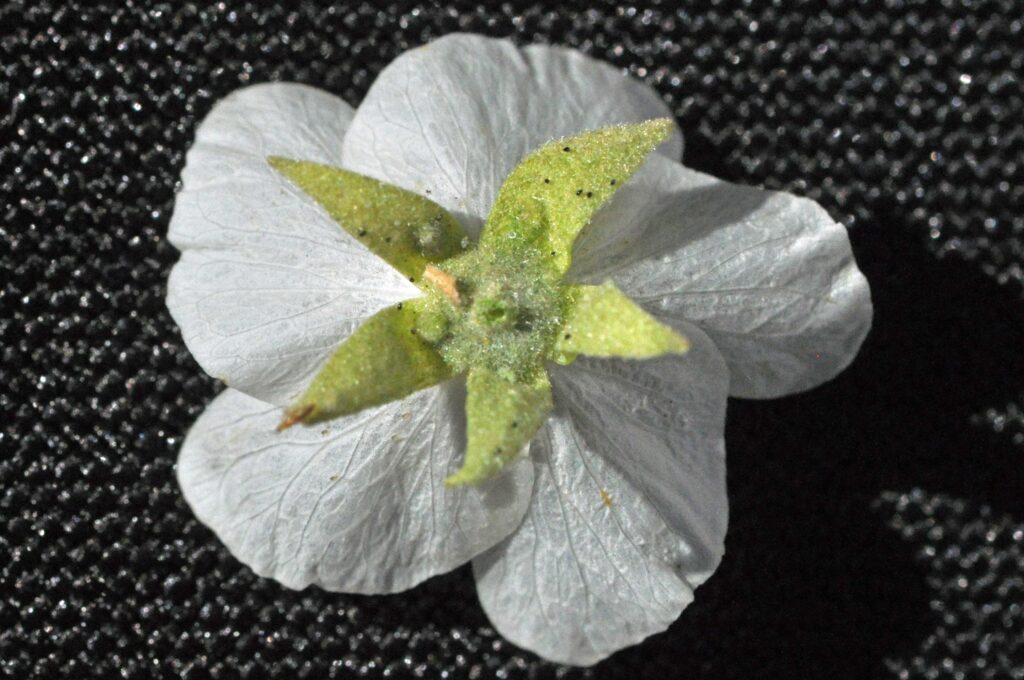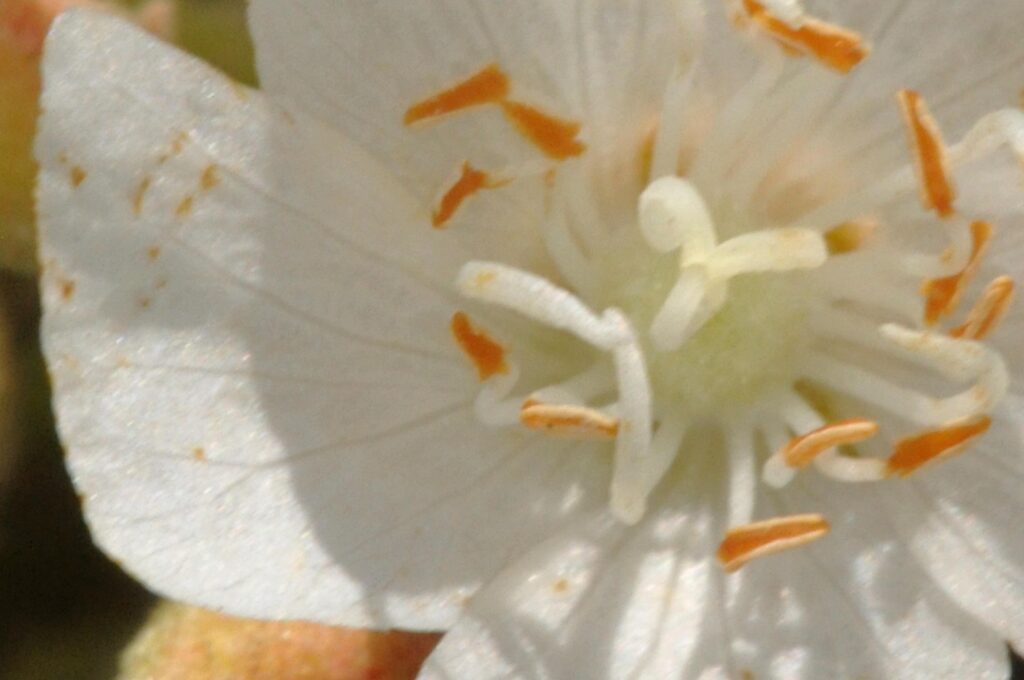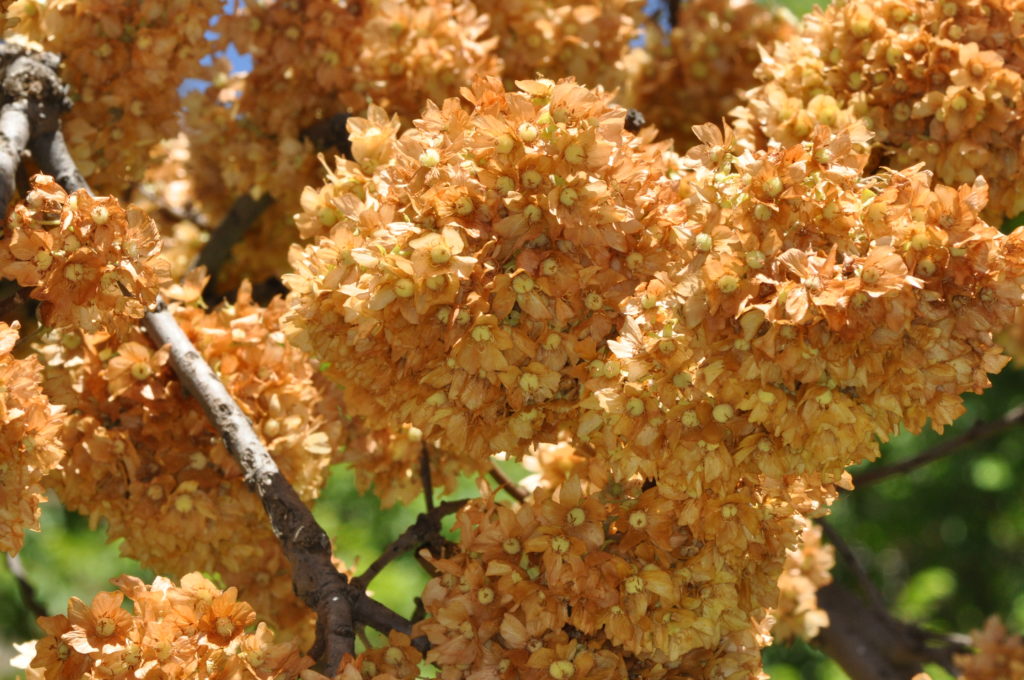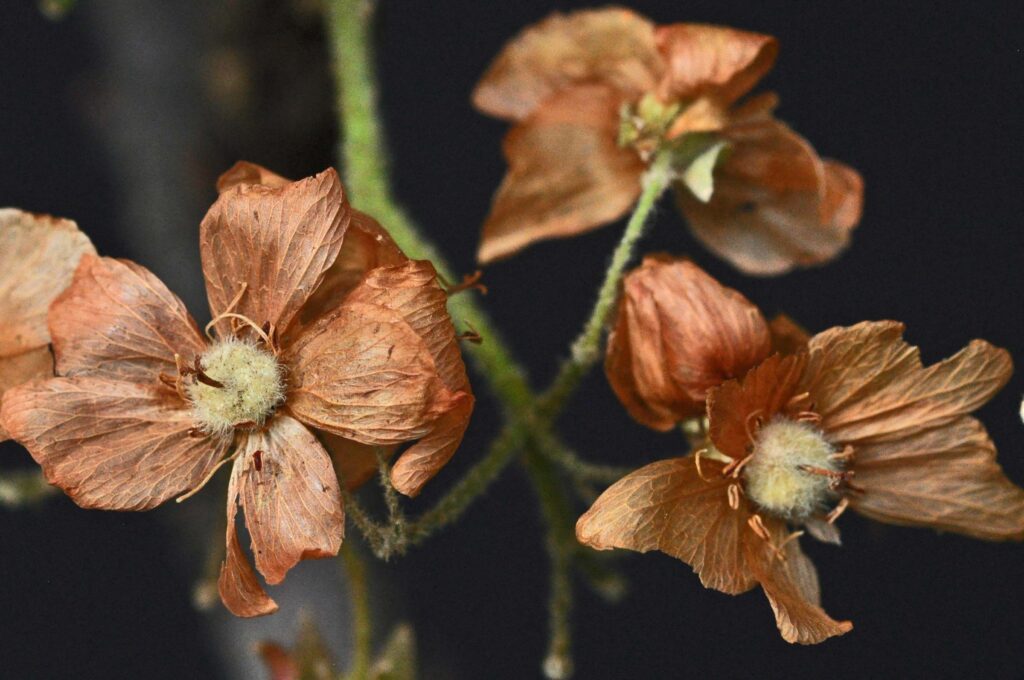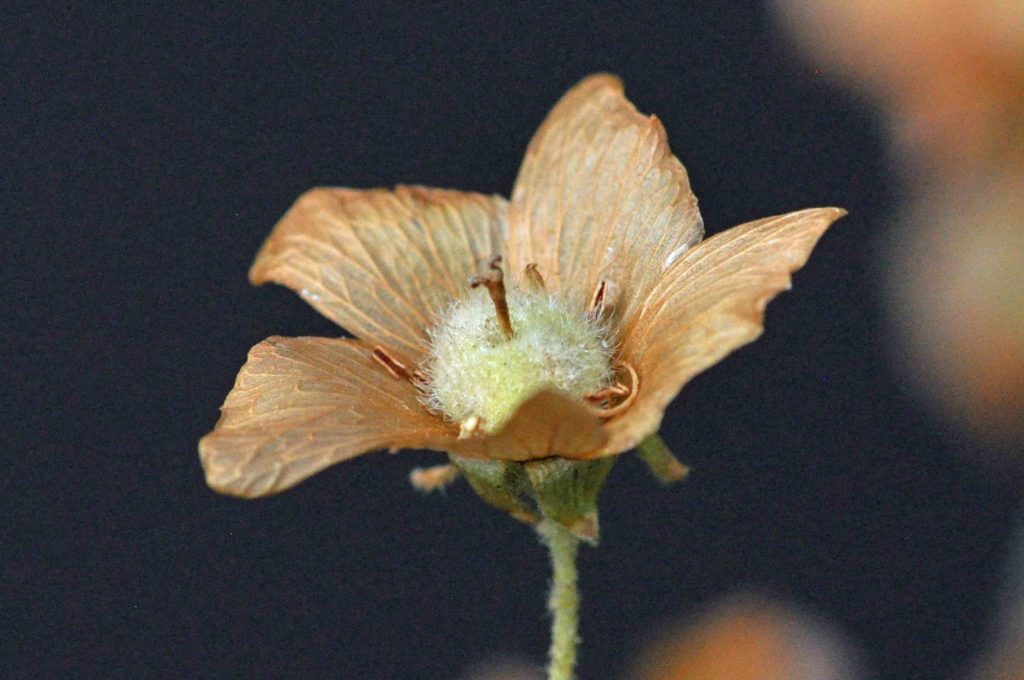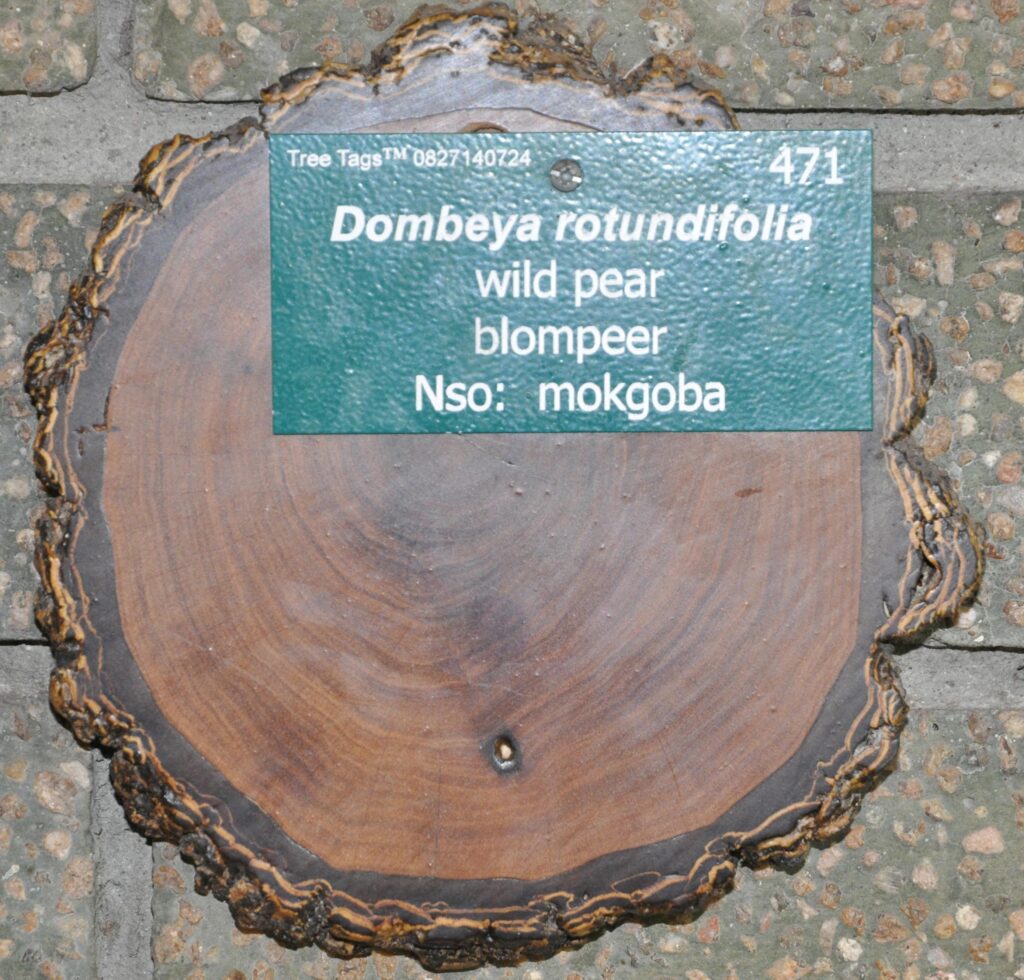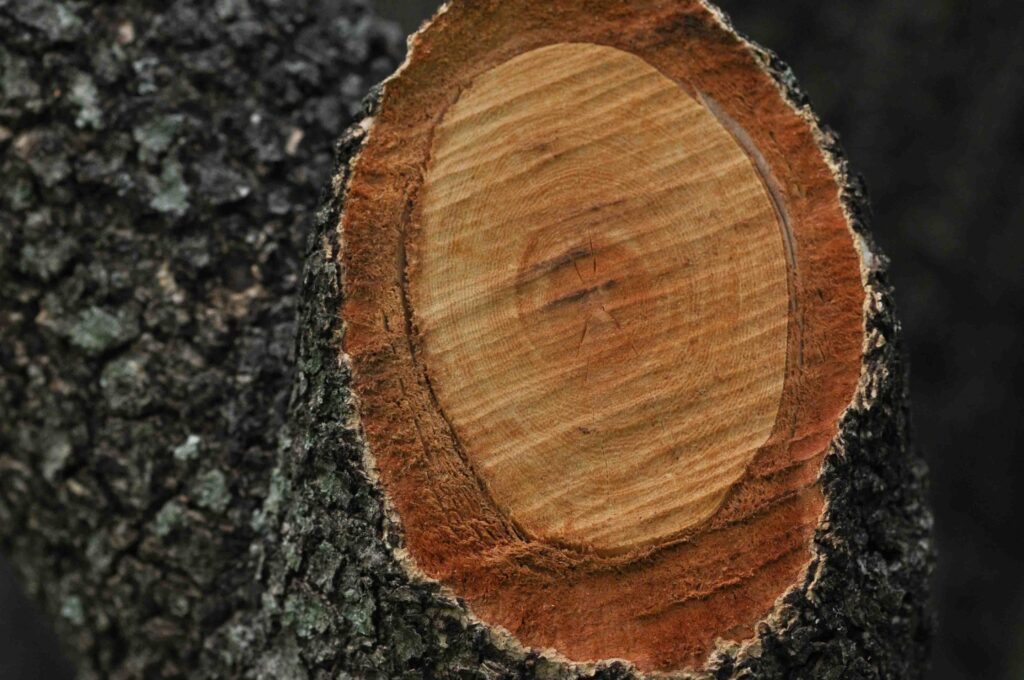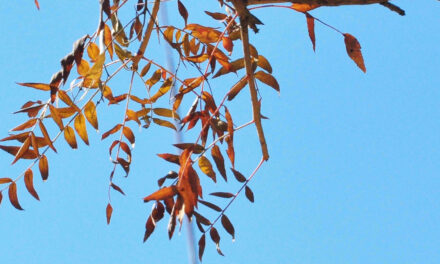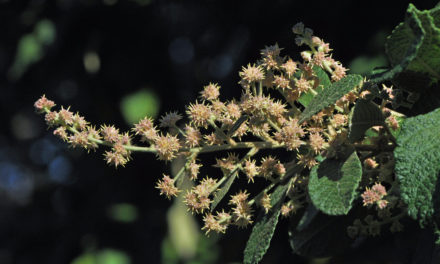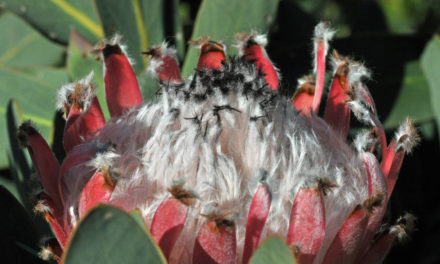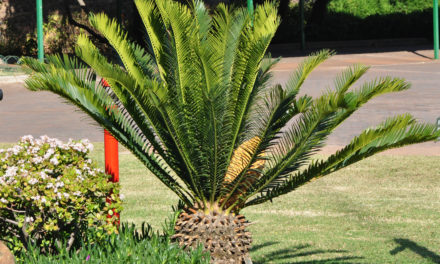General Info – summary
This impressive deciduous Tree is usually up to 5m high. Bark becomes dark brown and vertically fissured. Roundish Leaves are simple, have stipules & 5-7 veins arising from the base. Margins are entire toothed or scalloped. Spectacular, usually white, 5-merous, regular, bisexual Flowers are in cymes with stamens and staminodes. Fruit is a small wind dispersed capsule with papery petals and tiny seeds.
Description
Dombeya rotundifolia
Previous Names: Dombeya damarana, Dombeya multiflora. Dombeya dinteri, Xeropetalum rotundifolium.
SA Tree No. 471.
Common names: (Afr) Blombos, Blombossie, Blomhout, Blompeer, Dikbasa, Dralpeer, Drolpeer, Gewone Drolpeer, Wildepeer. (Eng) Common Dombeya, Round Leaf Dombeya, Wild Pear, Wild-pear, Wild Plum. (isiZulu) Inhliziyonkulu, Unhliziyonkhulu. (Northern Sotho) Mokgoba. (Setswana) Molobare. (siSwati) Umuwane, Unhliziyonkhulu, Nhliziyo, Umbikanyaka (the tree that heralds the new season). (Tshivenda) Tshiluvhari. This tree is not related to the pear tree – which in the genus Pyrus in the family Rosaceae.
Family: Malvaceae. (Wild Pear, Gossypium – cotton, baobab and Hibiscus family). This family has 240+ genera and 4 200+ species. Most species are herbaceous, but a few are trees. Indigenous genera that have trees on this website includes Adansonia (baobab), Cola, Dombeya, Grewia, Hibiscus, Sparrmannia and Sterculia. Stems contain mucous canals. The usually alternate, often compound or palmately veined Leaves of all possess stipules and apart from Adansonia, remain simple. Flowers are regular, bisexual or unisexual and have 5 petals (Sparrmannia africana has 4) with regularly arranged overlapping edges. Petals are absent in Cola and Sterculia. There are 5 to many stamens with filaments often united into a staminal tube. This surrounds the superior Ovary with axile placentation and its simple Style and capitate or lobed Stigma. Fruits are usually nuts, schizocarps or loculicidal capsules.
Name Derivation: Dombeya after Joseph Dombeya (1742-1794) a French botanist who spent much time in South America. His story is worth reading. Part of his collection was stolen and is now in the British Museum. There are more than 220 species in the genus Dombeya, 8 of which occur in southern Africa. rotundifolia refers to the almost round leaves.
Conservation: National Status: L C. (Least Concern). 2008: V.L. Williams, D. Raimondo, N.R. Crouch, A.B. Cunningham, C.R. Scott-Shaw, M. Lötter and A.M. Ngwenya.
Tree
This Tree is usually up to 5m high (photo 496) but may reach 10m. It ends in a much-branched rounded crown. When flowering together with the scarlet flowered coral tree Erythrina lysistemon, their striking flowers usually signify the beginning of spring. These trees either occur in clumps or are single. The Trunk often has a single tilted Stem (or trunk is main axis of the plant, the leaf and flower bearing as distinguished from the root-bearing axis – photo 496) and may reach 30cm in diameter. The Tree may become multi-stemmed in dry areas. The Bark becomes dark brown to black, rough, corky and fissured lengthwise (photo 40) – unlike Dombeya autumnalis, which has a smooth bark and smaller flowers that develop much later. On young Dombeya rotundifolia trunks (photo 401), raised light Lenticels (a usually raised corky oval or elongated area on the plant that allows the uncontrolled interchange of gases with the environment) are visible.
- 496. 2019/09/04. Walter Sisulu NBG. Photo: David Becking.
- 40. 2014/01/28. Walter Sisulu NBG. Photo: David Becking.
- 401. 2019/08/28. Linden. Photo: David Becking.
Leaves
On this deciduous tree, the simple, spirally arranged (photo 303) Leaves are almost circular to ovate and up to 20cm x 15cm. Leaves may become larger on non-flowering stems and young leaves may be tinged with red (photo 50). The thick, leathery leaves (photo 50) may be hairy on both sides. Under the microscope the star shaped hairs become visible. The Upper surface is dark green and rough (photo 50). The Lower surface is a paler green and has soft hairs. Here the hairy Veins are more prominent (photo 303). Small veins connecting the lateral veins are ladder-like (photo 52). The Apex is rounded to broadly tapering. The Base is cordate (heart shaped – photo 52) to round and has between 5 and 7 veins arising from it (photo 303). The rolled under Margins range from irregularly toothed or scalloped (having the margin marked with segments of circles – usually less than a semi-circle (photo 52) to almost entire (with a continuous margin, not in any way indented). The lateral veins tend to end within the scalloped margin (photo 52). The Petiole (leaf stalk) with its stellate hairs is usually up to 4cm long. Stipules (basal appendages of petiole) are narrow, have a triangular base and are fugacious (falling or withering away very early – are still visible at the base of the petiole in the young leaves – in photo 52).
- 303. 2014/02/18. Marakele NP. Photo: David Becking.
- 50. 2016/12/06. Walter Sisulu NBG. Photo: David Becking.
- 52. 2016/12/06. Walter Sisulu NBG. Photo: David Becking.
Flowers
The profuse, spectacular, white to pale pink (less common), sweet-scented Flowers are up to 2cm in diameter and clustered close to the ends of branches in Cymes (broad, more or less flat-topped, determinate flower cluster, with central flowers opening first – photo 83). Each cyme is about 7+cm wide and less high. The flowers usually emerge before the leaves and can be very impressive (photo 496 – under Tree). The Pedicels (stalks of single flowers are visible on the unopen flower buds on photo 313) are hairy. Below the flowers are 3 pubescent (hairy) floral Bracts which are caducous (an organ or part which is easily detached and shed early). The flowers are bisexual and actinomorphic (Regular, symmetrical. Flowers are vertically divisible into similar halves by more than 1 plane passing through the axis). Prior to the buds opening, the 5 Sepals are hairy on the outside and may initially be red (photo 313). They turn green and become reflexed once the bud begins to open (photos 313 & 399). The 5 overlapping Petals (photo 399) are usually pure white but occasionally a light pink. They are persistent and become papery after pollination, turning a clearly visible light brown colour (photos under Fruit). The numerous Stamens are of different lengths and each end with an initially orange, oblong Anther (photo 35) that has parallel Theca (pollen sacs – microsporangia of an anther – photo. They produce microspores – pollen grains in seed plants). These anthers open through a longitudinal slit. Linear, white-tipped, spatulate Staminodes (sterile stamens) arise with the stamens. Each is up to 6mm long. They are longer and thicker than the stamens and lack anthers (photo 35). There is a single Pistil (a unit of the Gynoecium, the female element of the flower, composed of the Ovary, Style and a 3-lobed Stigma (right hand flower in photo 313). The superior Ovary is up to 2,5mm wide and covered with densely matted woolly hair. Ovules (egg cells) occur in each locule. (Jul-Oct).
- 83. 2014/09/23. Walter Sisulu NBG. Photo: David Becking.
- 313. 2015/09/15. Walter Sisulu NBG. Photo: David Becking.
- 399. 2019/08/28. Linden. Photo: David Becking.
- 35. 2014/10/19. Walter Sisulu NBG. Photo: David Becking.
Fruit
The tiny – about 6mm in diameter, almost spherical, silky haired, Fruit (photo 370) is a light hairy up to 6mm in diameter Capsule (a dry fruit resulting from the maturing of a compound ovary, which usually opens at maturity by one or more lines of dehiscence). Flowers remain on the tree and the now brown persistent and surrounding brownish papery petals (photo 116) eventually act as wings (photo 370) to aid the wind dispersal of the completely ripe fruit. In photo 371, the now ageing petal lobes are clearly visible. Here the remains of the longitudinally dehiscent Anthers as well as the Stigmas and Styles are also visible. The very small Seeds have a hard, rough Testa (seed coat) and are triangular in cross-section. (Oct-Dec).
- 116. 2014/09/30. Walter Sisulu NBG. Photo: David Becking.
- 370. 2019/10/22. Walter Sisulu NBG. Photo: David Becking.
- 371. 2019/10/22. Walter Sisulu NBG. Photo: David Becking.
Distribution & Ecology
This Plant grows naturally in the bushveld, in open woodlands, in areas at a wide range of altitudes, moderate rainfall and is common on rocky hillsides. The tree is both cold and fire resistant and may grow singly or in clumps and often on termite mounds. In South Africa it occurs in KwaZulu-Natal, Gauteng (common between Johannesburg e.g., Melville Koppies and Pretoria), Mpumalanga, North West and Limpopo. Beyond South Africa it occurs in Botswana, Swaziland, Namibia, Zimbabwe, Mozambique and northwards into East Africa. The plant does well in dry areas. Game, including kudu browse the Leaves and young shoots. At least 3 species of butterflies make use of the leaves e.g. the Ragged Skipper (Caprona pillaana) larva feed on the leaves. They have a year-round flight period. Many other butterflies visit the flowers. Green Beetles (Melyris sp.) also associated with this tree. They are attractive, metallic grooved-winged, about 7mm and long feed on the pollen. Many other insects are attracted – including the scale insect (Lecanodiaspis tarsalis). The flowers produce large quantities of Nectar, which is also utilised by Honeybees. A common immobile white scale insect, Lecanodiaspis tarsalis is often visible.
Ethnobotany
This is a good bonsai plant. The planted tree is often fast growing and may be spectacular when flowering. It is one of the first trees to flower. The blue-grey Wood is strong, fine textured and does not split. It is widely used for implement handles, furniture, mine props and for carving. Of this wood Galpin wrote, “A first-class timber, excellent for any purpose for which wood is required that does not split and has great strength.” The wood is termite resistant. The Bark is strong, and the inner bark makes good strong fibre that is used to make rope. The trees are easily raised from Seeds and may grow up to 1,5m per year. The Roots are not aggressive, and this is a non-poisonous tree. In places, the first spectacular spring blossoms form part of the ingredients used for aiding success in courtship. The tree is widely used for local medicine. When Erythrina caffra (bright red flowers) and Dombeya rotundifolia grow together, the joint flowering is most impressive.
- 178. 2019/08/13. Skukuza. Photo: David Becking.
- 373. 2019/10/22. Walter Sisulu NBG. Photo: David Becking.
References
Boon, R. 2010. Pooley’s Trees of eastern South Africa. Flora and Fauna Publications Trust, Durban.
Burrows, J.E., Burrows, S.M., Lotter, M.C. & Schmidt, E. 2018. Trees and Shrubs Mozambique. Publishing Print Matters (Pty) Ltd. Noordhoek, Cape Town.
Coates Palgrave, M. 2002. Keith Coates Palgrave Trees of Southern Africa. edn 3. Struik, Cape Town.
Lawrence, G. H. M, 1951. Taxonomy of Vascular Plants. The Macmillan Company, New York. Tenth Printing 1965.
Palmer, E. & Pitman, N. 1972. Trees of southern Africa, Balkema, Amsterdam, Cape Town.
Schmidt, S. Lotter, M. & McCleland, W. 2002. Trees and Shrubs of Mpumalanga and the Kruger National Park.
van Wyk, B. & van Wyk, P. 1997 Field guide to Trees of Southern Africa. Struik, Cape Town.
Williams, V.L., Raimondo, D., Crouch, N.R., Cunningham, A.B., Scott-Shaw, C.R., Lötter, M. & Ngwenya, A.M. 2008. Dombeya rotundifolia (Hochst.) Planch. var. rotundifolia. National Assessment: Red List of South African Plants version . Accessed on 2024/12/07.
https://en.wikipedia.org/wiki/Joseph_Dombey
http://www.plantzafrica.com/plantcd/dombeyrotund.htm
http://abcjournal.org/index.php/ABC/article/viewFile/1054/1005.
http://posa.sanbi.org/flora/browse.php?src=SP

